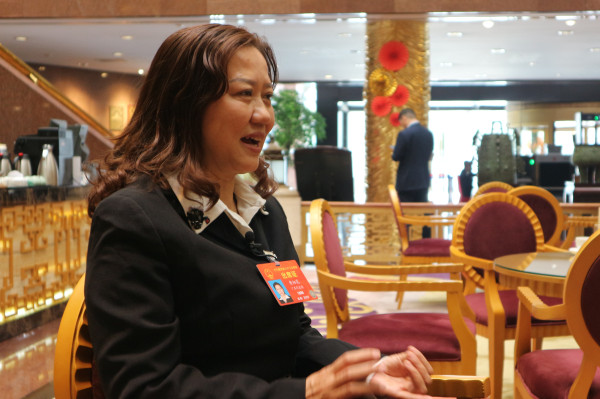NPC deputy: tourism helps alleviate rural poverty in Tibet
China.org.cn by Zhang Jiaqi,March 07, 2019 Adjust font size:
The growing Lulang International Tourism Town is offering more job opportunities to people in the surrounding rural area of the Tibet Autonomous Region, and helping them achieve a better life, Huang Xihua, a deputy of the second session of the 13th National People's Congress said on March 4.

The 10-square-kilometer Lulang International Tourism Town has been constructed with investment by the Guangdong provincial government as a key tourism development project. Huang, as deputy head of the eighth batch of the Tibet-aiding team from Guangdong province, arrived in Tibet in 2016.
"Now, traffic conditions have become much better with more highways and railways either already constructed or under construction, Huang said, recalling the unsatisfactory traffic conditions early on in her travels to the town.
Over the years, the Lulang International Tourism Town itself has also developed into not only one of Tibet's famous tourism destinations with beautiful scenery and a top-level scenic area in China, but has also become a life space with a tourist center, health center, kindergarten, business innovation-focused space, and other supporting facilities.
The growth of the International Tourism Town has attracted growing numbers to open stores and develop businesses here, creating a larger job pool, while local people have got involved in opening guesthouses and offering homestay facilities, resulting in an improved quality of life, Huang said.
In the Lulang Maker Space, a special exhibition area has been set up for agricultural and animal husbandry products and handicrafts in seven prefectures of Nyingchi, Tibet, covering an area of more than 1400 square meters.
Tourists can watch the on-site production of the handicrafts and buy the products. The offline exhibition is also supplemented by online promotion, further contributing to sales, and consequently, poverty alleviation of people in the surrounding area.
Huang, who is also the director of the Lulang Scenic Area Management Committee, visited all the tenants in the International Tourism Town and many local people in 2017 and 2018 to collect their views and deliver them to Beijing.
At the annual NPC meeting, China gathers a wide range of people's voices from the motions of NPC deputies and charts a new course for its development over the coming year.
This time, Huang introduced new motions, calling for more support in air logistics to Tibet so as to further boost tourism and alleviate poverty in the region.
According to the government work report delivered by Premier Li Keqiang at the opening meeting of the annual legislative session on March 5, the number of China's rural poor population had fallen by 13.86 million.
As 2019 marks a decisive period for China to achieve its goal of total poverty alleviation and build a moderately prosperous society in all aspects, the government work report also specified that the country would make solid progress in poverty alleviation and rural revitalization and move closer to completing the overall task.
Huang said that with the achievements Lulang International Tourism made, she hopes that the project would serve as a model of rural revitalization and play its leading role in the surrounding area.